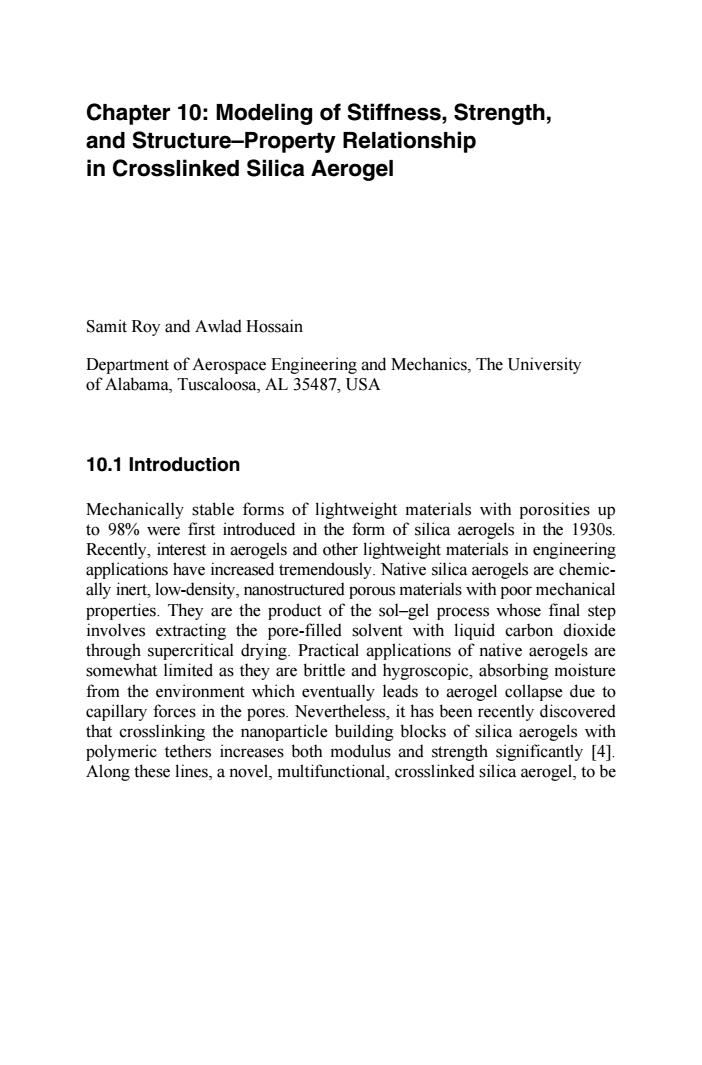正在加载图片...

Chapter 10:Modeling of Stiffness,Strength, and Structure-Property Relationship in Crosslinked Silica Aerogel Samit Roy and Awlad Hossain Department of Aerospace Engineering and Mechanics,The University of Alabama,Tuscaloosa,AL 35487.USA 10.1 Introduction Mechanically stable forms of lightweight materials with porosities up to 98%were first introduced in the form of silica aerogels in the 1930s. Recently,interest in aerogels and other lightweight materials in engineering applications have increased tremendously.Native silica aerogels are chemic- ally inert,low-density,nanostructured porous materials with poor mechanical properties.They are the product of the sol-gel process whose final step involves extracting the pore-filled solvent with liquid carbon dioxide through supercritical drying.Practical applications of native aerogels are somewhat limited as they are brittle and hygroscopic,absorbing moisture from the environment which eventually leads to aerogel collapse due to capillary forces in the pores.Nevertheless,it has been recently discovered that crosslinking the nanoparticle building blocks of silica aerogels with polymeric tethers increases both modulus and strength significantly [4]. Along these lines,a novel,multifunctional,crosslinked silica aerogel,to beChapter 10: Modeling of Stiffness, Strength, and Structure–Property Relationship in Crosslinked Silica Aerogel Samit Roy and Awlad Hossain Department of Aerospace Engineering and Mechanics, The University of Alabama, Tuscaloosa, AL 35487, USA 10.1 Introduction Mechanically stable forms of lightweight materials with porosities up to 98% were first introduced in the form of silica aerogels in the 1930s. Recently, interest in aerogels and other lightweight materials in engineering applications have increased tremendously. Native silica aerogels are chemically inert, low-density, nanostructured porous materials with poor mechanical properties. They are the product of the sol–gel process whose final step involves extracting the pore-filled solvent with liquid carbon dioxide through supercritical drying. Practical applications of native aerogels are somewhat limited as they are brittle and hygroscopic, absorbing moisture from the environment which eventually leads to aerogel collapse due to capillary forces in the pores. Nevertheless, it has been recently discovered that crosslinking the nanoparticle building blocks of silica aerogels with polymeric tethers increases both modulus and strength significantly [4]. Along these lines, a novel, multifunctional, crosslinked silica aerogel, to be